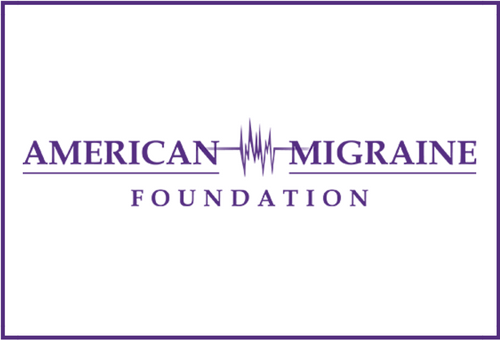Global Guidelines for Acute Migraine Treatment
You are currently watching a preview of this interview. Unlock the full version by upgrading to an Access Pass bundle! Get FREE access to 8 expert interviews from Day 1 and Day 2 when you register today!
Key Questions
- Should triptans be used when analgesics and NSAIDs are ineffective?
- If a triptan is only partially effective, should the dose be increased?
- If the first triptan is not effective, should a different triptan be tried?
- If triptans are only partially effective, should a combination of NSAIDs and triptans be used?
- Do the gepants and lasmiditan have a role in treating migraine attacks?
- Are ergot derivatives an option for treating migraine attacks?
- In people with nausea and/or vomiting, should antiemetics be combined with analgesics, NSAIDs, and triptans?
- What are treatments for early vomiting during an attack?
- What is the recommended timing of administration of acute treatment?
- How can headache relapse be treated following the initial successful treatment of an attack?
- How should we treat attacks that persist more than 72 hours (status migrainosus)?
- What is the maximum number of days that acute medications can be taken without risking medication overuse headache?
- Which treatment options are preferable during pregnancy and breastfeeding?
- What drugs can be used in children and adolescents for migraine attacks?
- What drugs can be used for people over 65?
- What are the recommended options for people with a history of stroke or cardiovascular disease?
- How can menstrual migraine be treated?
Interview Notes
- Prof. Simona Sacco
- Cephalalgia
- Cephalalgia Reports
- Article: “International Headache Society global practice recommendations for the acute pharmacological treatment of migraine”
- Article: “International Headache Society global practice recommendations for preventive pharmacological treatment of migraine”
Treatments Mentioned
- Acetaminophen/Paracetamol
- Acetylsalicylic acid/Aspirin
- Amitriptyline
- Analgesics
- Antiemetics/Anti-nausea medications
- Antithrombotics
- CGRP small-molecule receptor antagonists (gepants)
- Diclofenac (Cambia)
- Dihydroergotamine (DHE)
- Dopamine antagonist
- Ergotamine
- Frovatriptan
- Hormonal contraceptives
- Lasmiditan (Reyvow)
- Magnesium
- Metoclopramide
- Migranal
- Naproxen
- Nonsteroidal anti-inflammatory drugs (NSAIDs)
- Neuromodulation devices
- Rizatriptan
- Sumatriptan
- Sumatriptan and naproxen sodium (Treximet)
- Supplements
- Triptans
- Zolmitriptan
Please note: The Migraine World Summit’s aim is to bring you a variety of perspectives and expertise, independent of bias or judgment. Alternative theories presented in this video have not been medically reviewed. Views expressed in this interview do not necessarily represent the views of the Migraine World Summit. Please always consult your health care professional and do your own research before making changes to your treatment plan.

Simona Sacco, MD
Professor of Neurology
University of L’Aquila, Italy
Simona Sacco is full professor of neurology at the University of L’Aquila in Italy. She is head of the Department of Neurology and Stroke Unit, and personally runs the local Headache Referral Center. She is treasurer of the European Headache Federation and co-editor of The Journal of Headache and Pain. Professor Sacco’s expertise is not only in headache but also in stroke. She is co-chair of the Guideline Board of the European Stroke Organization and board member of the Italian Stroke Organization. She is assistant editor of Stroke. Professor Sacco has published widely in peer-reviewed journals and elsewhere for over 20 years.

Get all the 2025 interviews, videos, audio, transcripts, and more. Why upgrade?
- Can’t attend live? Watch anytime
- Prefer reading or listening? Get transcripts and audio
- Want to dive deeper? Explore the additional footage & resources
- Need ongoing support? Reference expert advice year-round
- Lifetime access to 2025, no annual fee
Related Talks for: Day 2 (2025)
Part I: Preventing & Reversing Chronic Migraine
Richard B. Lipton, MD
How Heavy Metals & Trace Elements Affect Migraine
Robert Bonakdar, MD
Are People With Migraine Having More Strokes & Heart Attacks?
Chia-Chun Chiang, MD
The American Migraine Foundation (AMF) is a non-profit organization dedicated to the advancement of research and awareness surrounding migraine, a disabling condition that impacts more than 37 million men, women and children in the United States. The AMF was founded in 2010 to provide global access to information and resources for individuals with migraine as well as their family and friends.
Lilly unites caring with discovery to create medicines that make life better for people around the world. We’ve been pioneering life-changing discoveries for nearly 150 years, and today our medicines help more than 51 million people across the globe. To learn more, visit Lilly.com and Lilly.com/newsroom or follow us on Facebook, Instagram, and LinkedIn.

Noticing new symptoms? Struggling with Chronic Migraine? Looking for hope? Try these Learning Tracks to more to get the most out of your Summit experience.







